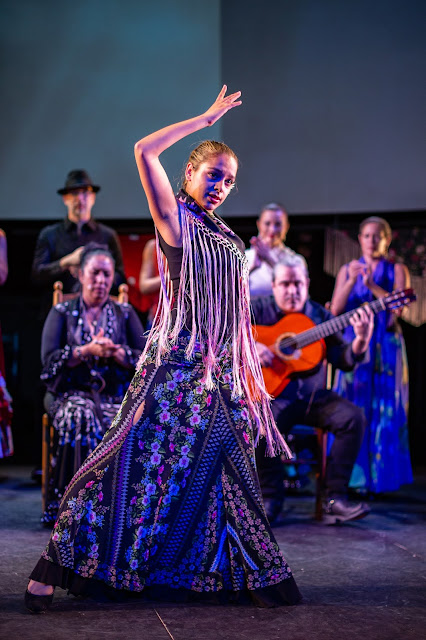At the movie's end, the man behind me said, "I feel like I've been to the dentist and had all my teeth pulled."
I felt like I had seen a masterpiece.
I nominate Las Siamesas for "Best International Feature Film" and Rita Cortese for "Best Performance by an Actress in an International Feature Film." She plays the mother, and Valeria Lois is the daughter who does a pretty good job herself in the movie about a mother/daughter relationship.
The Siamese Bond made its DC debut last weekend at Gala Hispanic Theatre where the Gala Film Fest presented six movies by female filmmakers in this "Latin American Innovation."
Las Siamesas is a black comedy which produces audience guffaws with hard-hitting lines the mom and daughter exchange while on a bus trip to the shore to see apartments which the daughter has inherited from her father.
The bus ride takes a back seat to the relationship, but its momentum heightens expectations.
Daylight gradually wanes, travelers disembark from the bus, and all that remains are the two women, two drivers and the audience, a voyeuristic passenger on an existential journey leading (surprise!) to a breakdown.
The ride darkens.
And where there is darkness, loneliness, and consenting adults, there is fire.
The sex scene is the best I can recall, one directed from a woman's perspective without male directors' obligatory exposed breasts. Thank you, Director Paula Hernandez.
The first kiss, the hidden skin, shadows, movements, the passion. Leaving much to the imagination which is as it should be and makes for a better experience.
Listen to the hum of the bus and the magnificent score. That cello! To perfectly match the mood and emphasize the turmoils the daughter and the mother endure.
What appears to be a simple set intensifies the script.
It's bleak, it's funny, it's sad, and arouses emotions, all the moving parts necessary for a successful film. Okay, so maybe the pauses could have been shortened, but otherwise, what to improve?
Las Siamesas has been nominated for several international awards with a victory claimed by Director Hernandez who wrote the script with Leonel D'Agostino.
On another night at the Festival, I saw Ya Me Voy (I'm Leaving Now) by Lindsey Cordero and Armando Croda filmed over two years in Brooklyn, about an undocumented immigrant who wrestles with going home or staying in New York where he can continue his relationships and his collections. It's highly recommended, too, but it was Las Siamesas which drove my fingers to the keyboard.
All films are in Spanish with English subtitles. Carlos Gutierrez curated.
patricialesli@gmail.com

















